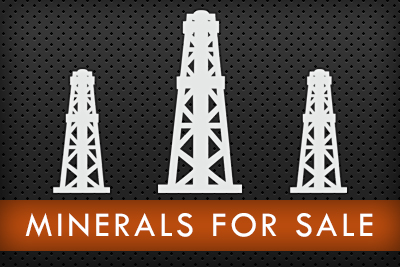Featured Listings
-

-

-
 Minerals For SalePrivate SaleM-5380-WV
Minerals For SalePrivate SaleM-5380-WV -

-

-
 Minerals For SalePrivate SaleM-23414-OK
Minerals For SalePrivate SaleM-23414-OK
Quick Search
Contact Us
News - (view all)
America's Greenest Energy Source (by. New York Post)
12/6/2013
Fracking outgreens ‘green’ energy: That was my chief observation when I returned to Anadarko Petroleum’s Landon Pad A, a natural-gas site in Lycoming County, Pa.
October’s quietude was totally unlike the cyclone of equipment, personnel, and activity that dominated this spot last June, when Anadarko and the American Petroleum Institute hosted journalists and policy analysts here.
Back then, engineers used a pressurized blend of 90 percent water, 9.5 percent sand, and 0.5 percent chemicals to shake subterranean shale deposits and awaken natural gas that has slumbered since the dinosaurs died. This hydraulic fracturing or “fracking” occurs some 6,000 feet underground. This is 5,000 feet beneath the water table — deep enough to bury three Empire State Buildings.
This spot now resembles the scene of a once-raging party that has been cleared out and cleaned up. The trucks have driven off. Dozens of workers have moved on. The cranes are gone. What remains are three acres of gravel-covered farmland, five completed wells, and a steady, low-volume whoosh.
This is the sound of natural gas being captured; counted by a “cash register” gauge that measures output and, thus, royalties; and conveyed via yellow pipes into the broader natural-gas market. The result? Warm bedrooms on crisp nights and hot showers on cold mornings.
Despite the shrill complaints of fracking foes, this productive-but-tranquil patch demonstrates how much greener fracking is than other power sources — even “green” ones.
Fracking should please those who fret about CO2: Since 2002, carbon dioxide output has grown 32 percent globally, Manhattan Institute senior fellow Robert Bryce wrote recently for Bloomberg View. “In the US, meanwhile, carbon dioxide emissions were 8 percent lower in 2012 than they were in 2002, largely due to a surge in shale gas production, which has reduced coal use.
”Indeed, fracking has helped America keep its (unratified) Kyoto Protocol commitments while other countries decry so-called “global warming,” yet continue boosting CO2.
Water is a precious resource: So, conservationists should smile at how little water fracking requires versus other energy sources. According to the U.S. Energy Department and the Ground Water Protection Council, it typically takes three gallons of water to produce 1 million British Thermal Units of energy from deep-shale natural gas/fracking. Nuclear power requires 11 gallons/million BTUs. Coal: 23 gallons. Corn ethanol? A whopping 15,800 gallons. And soy biodiesel requires nearly triple that amount: 44,500 gallons per million BTUs — 14,833 times the water needed for fracking.
But what about ground water pollution? The hysteria that fracking poisons drinking water lacks one key ingredient: Evidence.
As former EPA chief Lisa Jackson testified before Congress in May 2011: “I’m not aware of any proven case where the fracking process itself has affected water.
”Protecting habitat is another key eco-priority: Fracking succeeds here, too. An SAIC/RW Beck study found that natural gas companies use 0.4 acres of land to generate a year’s supply of electricity for 1,000 households. Nuclear power requires 0.7 acres. Coal consumes 0.75 acres. Wind power needs six acres. And, solar cells require 8.4 acres to fuel 1,000 households annually. This is 21 times natural gas’ habitat impact.
So, if you are a Gila monster or a Joshua tree, cheer fracking and hiss solar.
What about wildlife? Before installing a new pipeline, Anadarko checks for Indiana bats as they migrate in May and June. Obstructing their flight paths “changes their way of life and can be detrimental to their health,” explains Anadarko’s Brad Milliken. In such cases, Milliken says, Anadarko would reroute a pipeline rather than threaten these bats.
In contrast, the “Earth friendly,” taxpayer-subsidized wind industry slaughters thousands, perhaps millions of mosquito-eating bats unlucky enough to fly into the giant Cuisinarts that are their turbines. Author Paul Driessen has documented this carnage with tragic eloquence.
Environmentalists should embrace natural-gas fracking for being easy on the air, water, land, and wildlife — in most cases far more than the “sustainable” energy sources that ecologists adore.